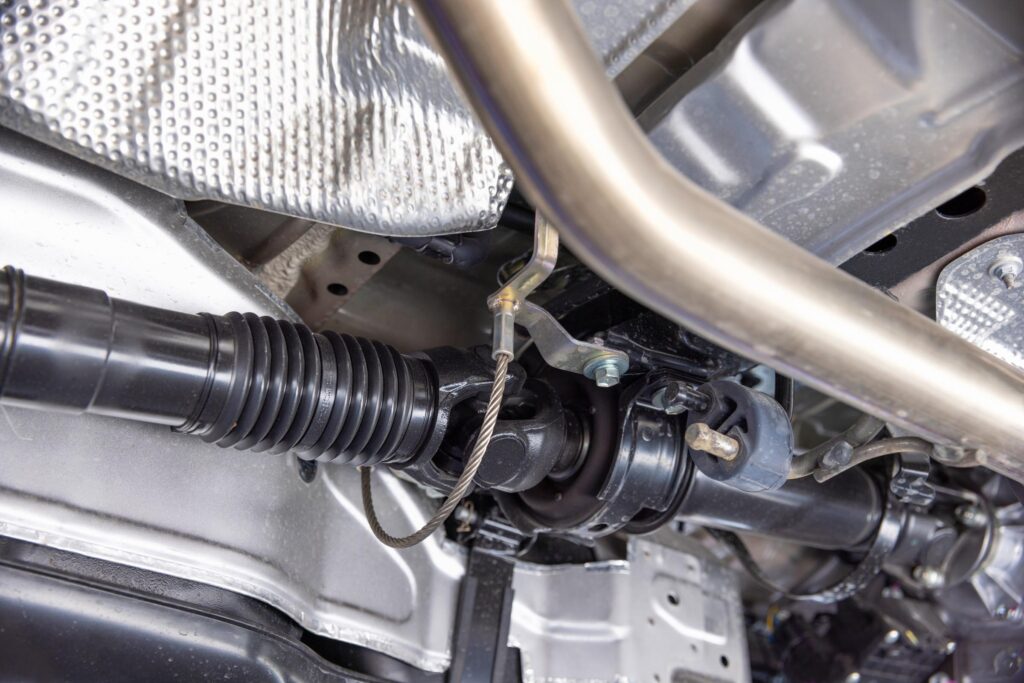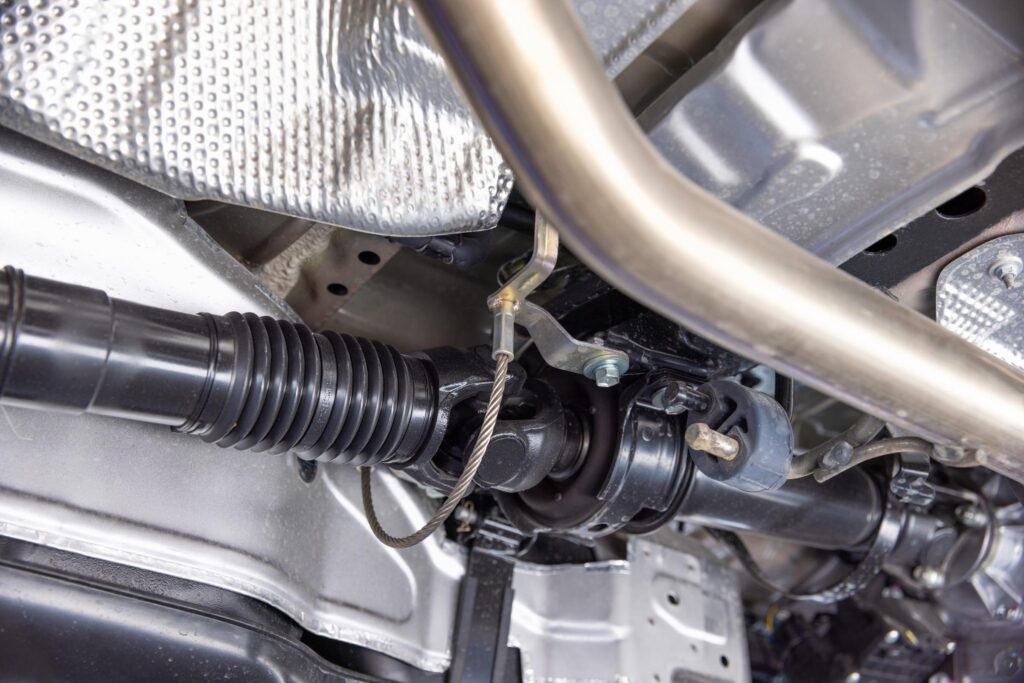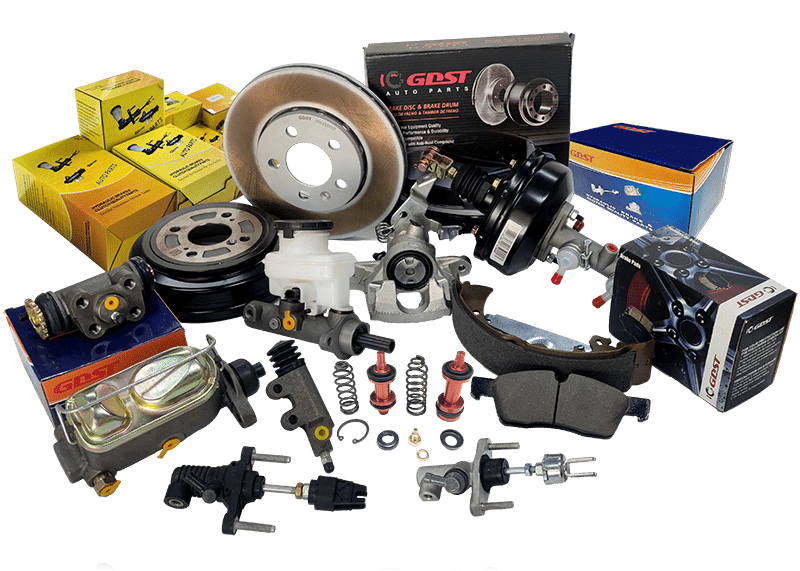What causes drive shaft failure? It’s rarely just one issue. In most cases, failure is the result of multiple small problems building up over time, like poor lubrication, misalignment, part fatigue, or even improper driving habits. This article explores the most common causes of drive shaft failure to help automotive professionals diagnose issues more accurately and prevent them more effectively.
Common Causes of Drive Shaft Failure
U-Joint Wear or Damage

One of the most common yet often overlooked issues is U-joint wear. The U-joint is essential for transmitting torque and accommodating angular movement in the drive shaft. Its proper function relies heavily on good lubrication and sealing.
- Insufficient Lubrication: Some U-joints require regular greasing, but maintenance is often neglected. Without proper lubrication, the needle bearings dry out, creating gaps that lead to vibration and unusual noises.
- Seal Aging: When seals fail, dirt and moisture can enter, corroding the needle bearings or the shaft sleeve and accelerating failure.
- Seized After Dry Running: Prolonged dry operation can cause the U-joint to seize, losing its ability to flex and putting additional strain on the drive system.
Spline Shaft Wear or Poor Engagement

Spline shafts are responsible for accommodating the length variations due to suspension movement. Frequent extension and retraction, especially under heavy use, can lead to fatigue damage on the engaging surfaces.
- Frequent Load Changes: Constantly hauling heavy loads or driving on uneven surfaces causes the splines to slip, damaging the teeth.
- Increased Axial Play: Loose spline engagement can lead to shaking and unusual noises.
- Misalignment or Mismatched Teeth: Replacing the drive shaft with non-OEM parts without recalibration may misalign the spline, leading to uneven stress.
Center Support Bearing Damage

For two-piece drive shafts, the center support bearing maintains rotational stability. When it fails, the entire drive shaft can feel “suspended,” causing vibrations.
- Bearing Aging and Grease Drying Out: Without adequate lubrication, the bearing can become loose, leading to excessive vibration and noise.
- Rubber Mounting Failure: If the rubber components of the support bearing crack, the bearing itself can shift, causing torque imbalances.
Metal Fatigue and Structural Damage

Just like human muscles, drive shafts can experience fatigue after prolonged high-speed and high-load operation, leading to eventual structural failure.
- Fatigue Cracks: These typically appear at welds, joints, and the body of the shaft. Early signs are hard to detect, and cracks often lead to breakage.
- Impact Deformation: Hitting curbs, rocks, or other objects can cause minor bends. Over time, these deformities lead to eccentric rotation and eventual failure.
- Localized Stress: Uneven distribution of welding or inconsistent material thickness can accelerate fatigue.
Corrosion and Rust

Corrosion is especially common in coastal cities, areas that use road salt in winter, or vehicles that are left unattended for long periods without maintenance.
- Rust Breaking Down Protective Layers: What seems like a minor surface rust spot can be the beginning of a more serious problem, leading to cracks or breakage.
- Stiffening of Connecting Parts: Rust can cause the U-joint to seize or prevent splines from sliding properly, concentrating torque in specific areas.
- Seal Failure Accelerating Corrosion: Without proper seals, moisture and dirt can rapidly corrode the shaft, causing damage throughout the entire drive system.
Lubrication-Related Failures

Lubrication is the lifeblood of a healthy drive shaft. Without it, nearly every moving part becomes vulnerable.
- Grease breakdown: Under high-heat conditions (long highway trips or summer loads), grease can degrade and lose effectiveness.
- Skipped maintenance: Some commercial vehicles still need manual greasing, but poor maintenance habits lead to dry-running parts.
- Contaminants: A torn boot or damaged seal lets in water and grit, creating an abrasive paste that destroys components.
Installation Errors and Dynamic Balancing Issues

Many drive shaft issues arise not from wear but from improper installation.
- Misalignment: If the drive shaft isn’t aligned correctly with the transmission or differential, it can cause uneven loading during rotation.
- Loose or Tightened Bolts: Incorrectly torqued bolts can distort the flange, leading to uneven rotation.
- Imbalance: Missing balance weights, bent shafts, or improper modification can cause resonance at high speeds.
What causes drive shaft failure is rarely a simple question. What looks like a clean break is often the result of months—or even years—of small issues building up: poor lubrication, misalignment, metal fatigue, or improper use. Understanding these root causes helps you diagnose problems more accurately and communicate solutions clearly to your customers.
Prevention is always cheaper than repair, and true expertise lies in the details. When you share insights like these, you’re not just supplying parts; you’re helping your clients avoid downtime, reduce costs, and build trust with their customers.



